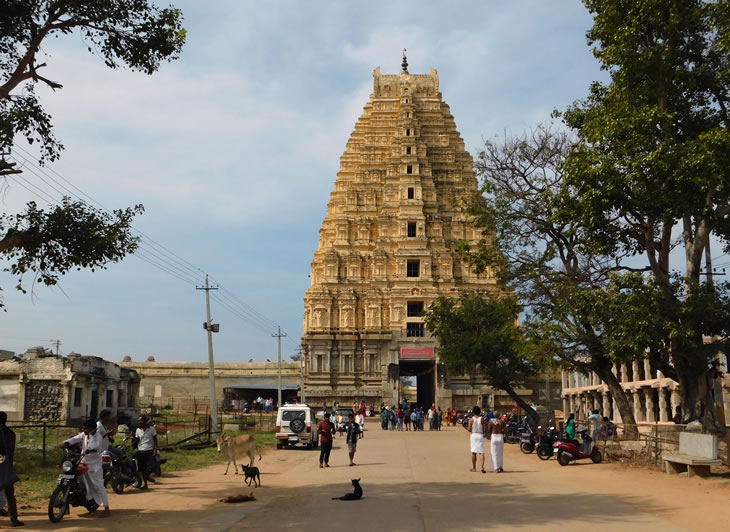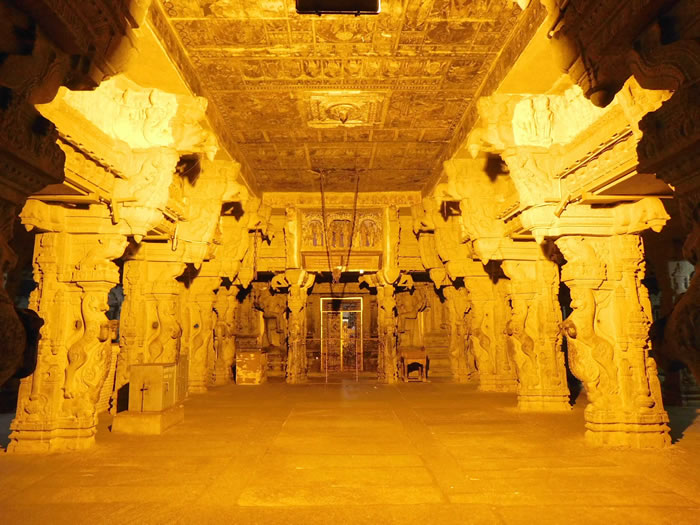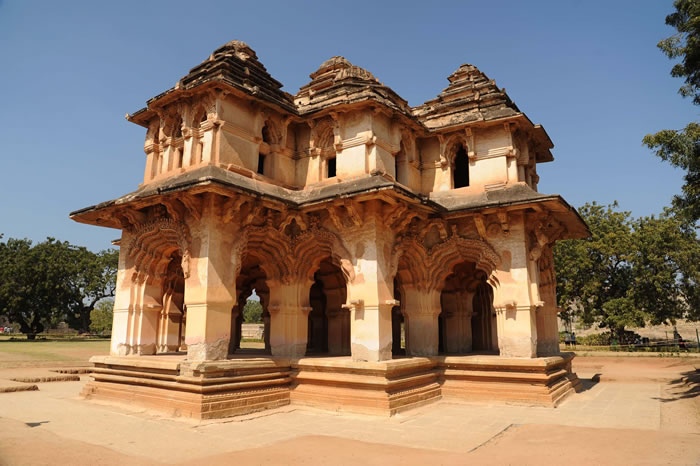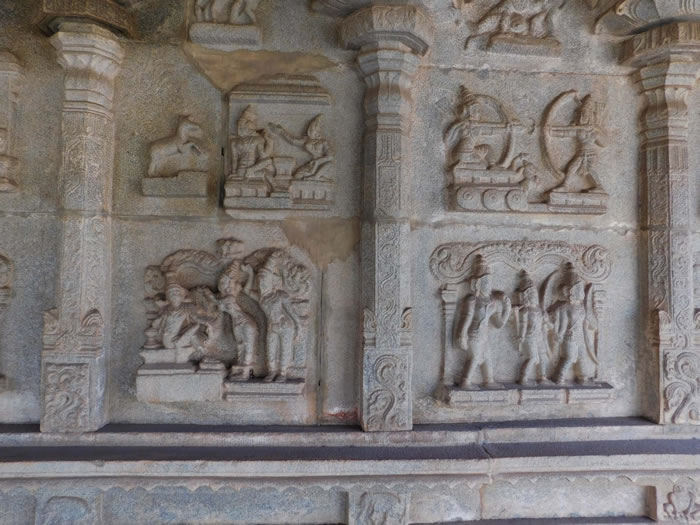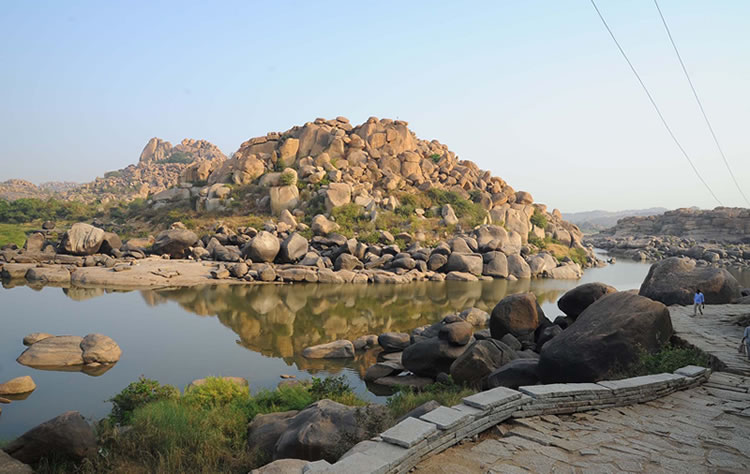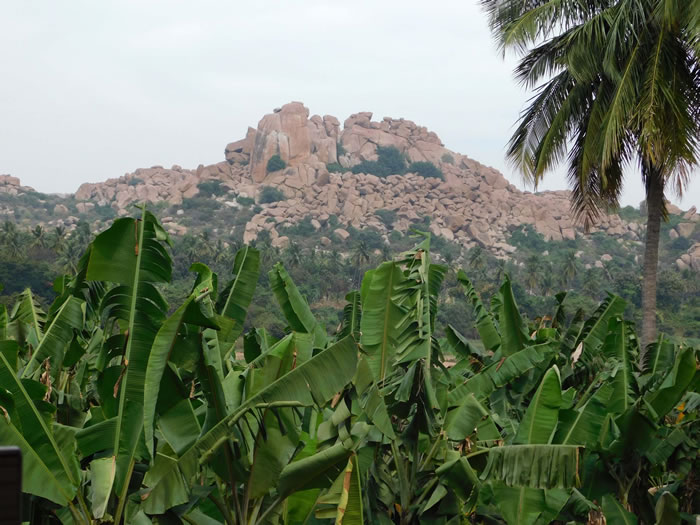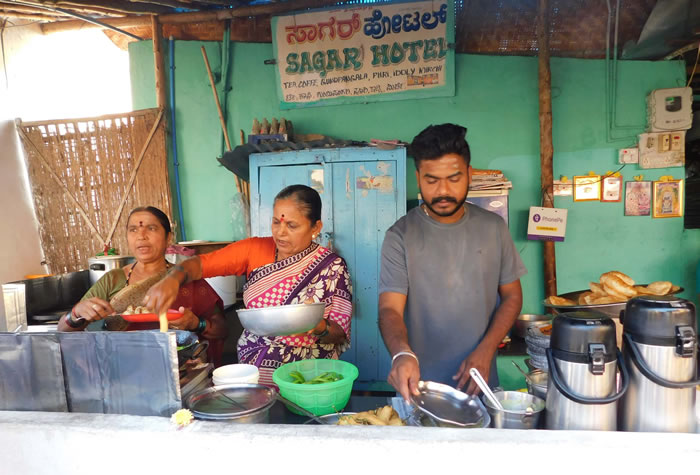Md. Masarrath Ali Khan
We were little aware of the surprises in store for us when we decided to visitHampi last month. Our train chugged into Hosapete Junction at 5 am. and we boarded a bus to Hampi. Its window panes were wet with mist and allowed a hazy picture of the dark surroundings. When we opened the windows, cold breeze slapped our faces. After a 12km drive, we alighted at the Hampi Bus Station, sipped a tea at a small cart, and occupied our room (booked in advance) in Rashmitha Guest House.
When we set out for sight-seeing at about 8 am, we saw manywomen selling garlands of jasmine flowers and bananas to pilgrims outside Virupaksha Temple. The temple elephant was taken out for a bath in the river and scores of children followed it.Women were selling breakfast (idli, dosaiand mirchi) in baskets outside Hampi Bazar. We tasted delicious idli and dosai. These small vendors serve these items with chutney and yes, withlots of love and affection!Hampi is a place where life remains simple and you can still experience the unalloyed joy of pleasant human relations!
Located on the southern bank of the Tungabhadra River in Bellary district of Karnataka, Hampi has been an important pilgrimage centre since ancient times. Nature has been kind to this ancient city. With Granite boulders of varying tones of grey,ochre, and pink, spreading all over as hills and long ridges or as piles of rock, Hampi’s mythical landscape is simply a visual magic.It was the Imperial capital of Vijayanagara Kingdom from 1343 AD to 1565AD.It became a centre of architectural and sculptural excellence and some of the best and magnificent specimens of Dravidian temples were produced during the reign of Sri Krishnadevaraya. He beautified the entire city with a glittering series of monuments temples, palaces, pavilions, gateways, baths, tanks, and ancient bazaars.
Our vehicle dropped us nearly a kilometer away from Vijaya Vithala Temple. We boarded a battery-run vehicle that took us to the main temple. This temple is the crowning glory of Hampi and represents the culmination of the Vijayanagara style of architecture.In front of the main temple is the famous stone chariot.The outermost pillars of its Maha-mandapa are called musical pillars. They emit the seven notes (Sa, Ri, Ga, Ma, Pa, Dha, and Ni) of the Indian classical music when gently struck. But these have been cordoned off and are out of bounds for t
We relished manyglasses of delicious buttermilk outside the temple, and then headed for the Queen’s Bath, a square building with a plain exterior and an ornate interior. It has a bath (pond) surrounded by decorated corridors and projecting balconies. We climbed theMahanavami Dibba; a huge stone platform built by Krishnadevaraya, and enjoyed panoramic views of the Pushkarini and surrounding ruins.
The next place on our itinerary was Hazara Rama Temple. In this temple, the long lines of carved reliefsshow scenes from the Ramayana, incidents like the birth of Rama, his exile into the forest, the abduction of Sita, the fight between Rama and Ravana, women playing drums, dancing with sticks and enjoying water sports; animals, soldiers and women, all marching towards seated kings.
A narrow gate admitted us into the Zenana Enclosure bounded by huge walls and the Lotus Mahal made a magical appearance. This two-storeyed structure is a blend of Indian and Islamic architectural styles. The king is said to have spent times with scholars in this palace.
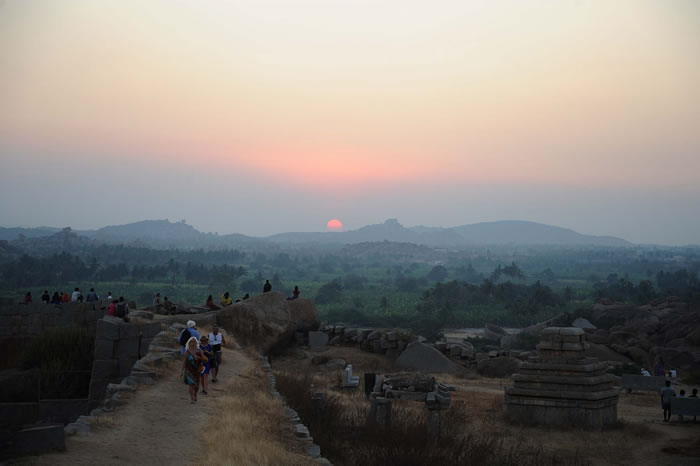 Sunset view from Hemakuta Hill
Sunset view from Hemakuta Hill
Our next stop was at Krishna Temple, built by Sri Krishnadevaraya in 1513 AD to commemorate his victory over Prataparudra Gajapati, the ruler of Orissa. During this battle, Sri Krishnadevaraya seized an image of the infant Krishna (holding butter in his right hand), brought it as a war trophy to Hampi and enshrined it in the Krishna Temple in 1515 AD, but the sanctum is now empty. That image of Krishna is now placed in the Government Museum in Chennai!
We witnessed a wonderful sunset from the sunset view point atop the Hemakuta Hill. As the sun went down, spreading a crimson glow, the real beauty of Hampi emerged in all its glory.
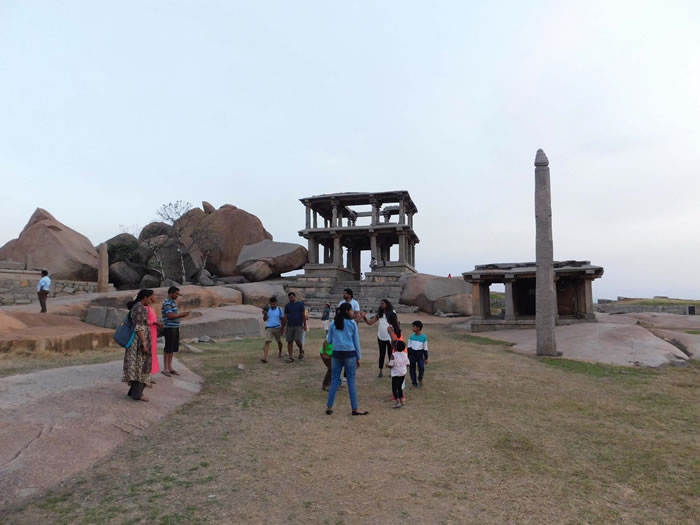 Sunset view point atop Hemakuta Hill
Sunset view point atop Hemakuta Hill
Our tour ended with a visit to Virupaksha Temple, one of the most famous, ancient and spacious shrines of Hampi. A 9-storeyed tower (known as Bistappa Gopura) forms the main entrance to this temple. We experienced perfect peace and tranquility at the shrine, as we went around taking pictures of some ancient beautiful paintings. Hampi is a magic that never seems to end.
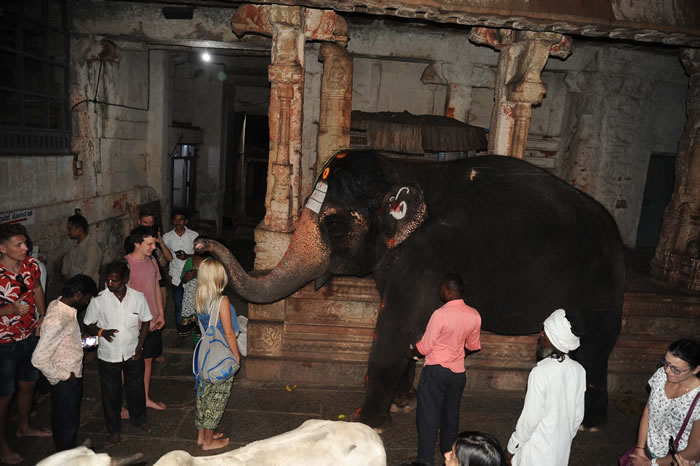 Temple’s Elephant blesses the Pilgrims
Temple’s Elephant blesses the Pilgrims
Small houses, guest houses, restaurants and fancy shops coexist in perfect harmony at Hampi Bazar. These streets also provide space to local children to play around and cows to roam freely.From textiles, toys and bags to traditional jewelrysets, handmade wall decors, trinkets, ancient coins and guidebooks…everything is sold here. We left Hampi that night vowing to return soon for a more leisurely visit.
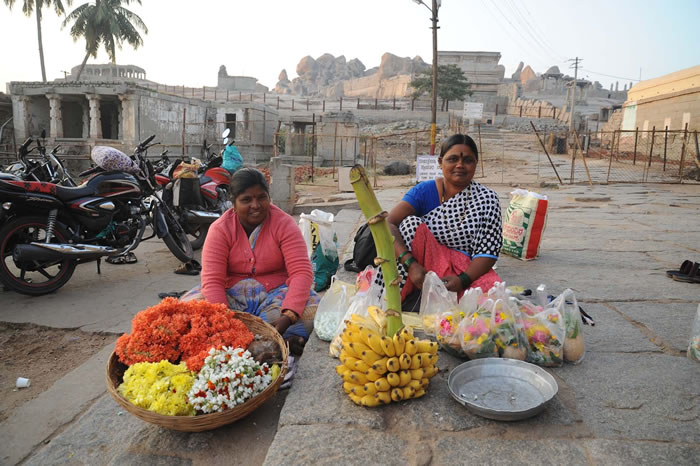 Local women sell Flowers and Banana outside Virupaksha Temple
Local women sell Flowers and Banana outside Virupaksha Temple

